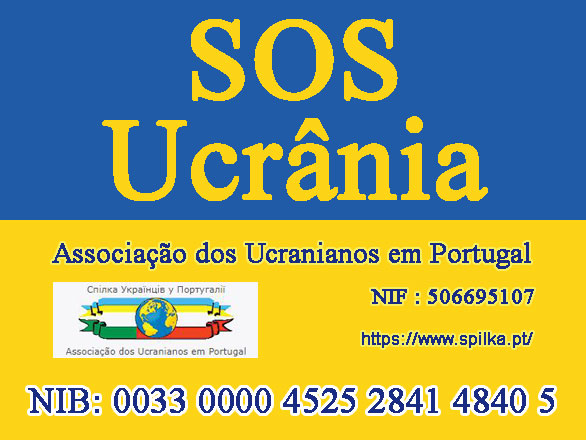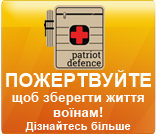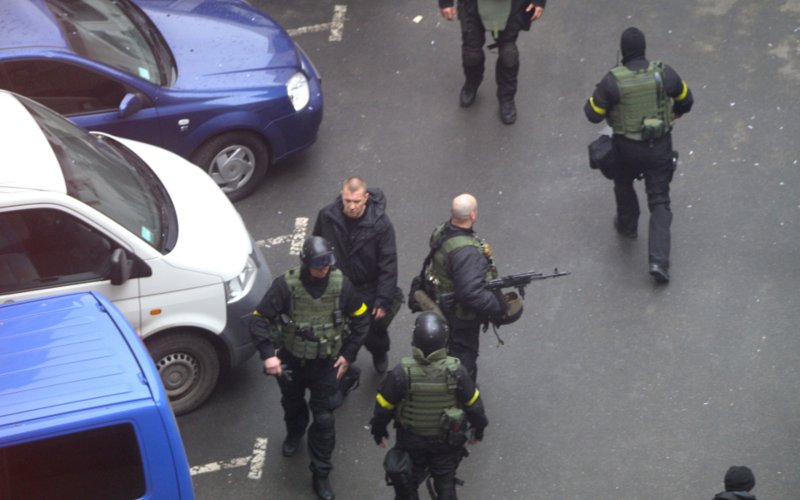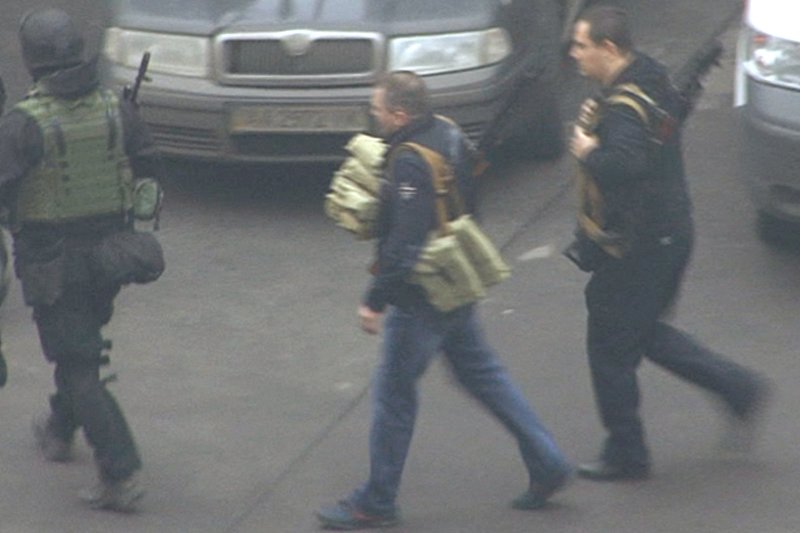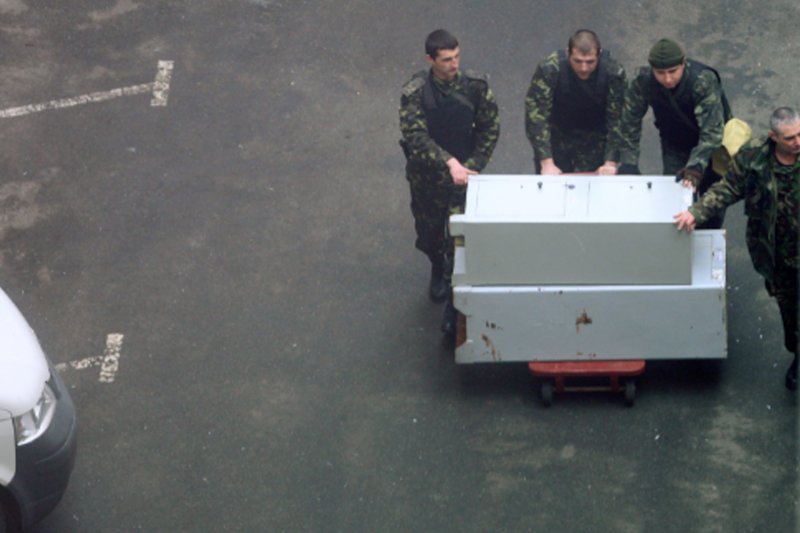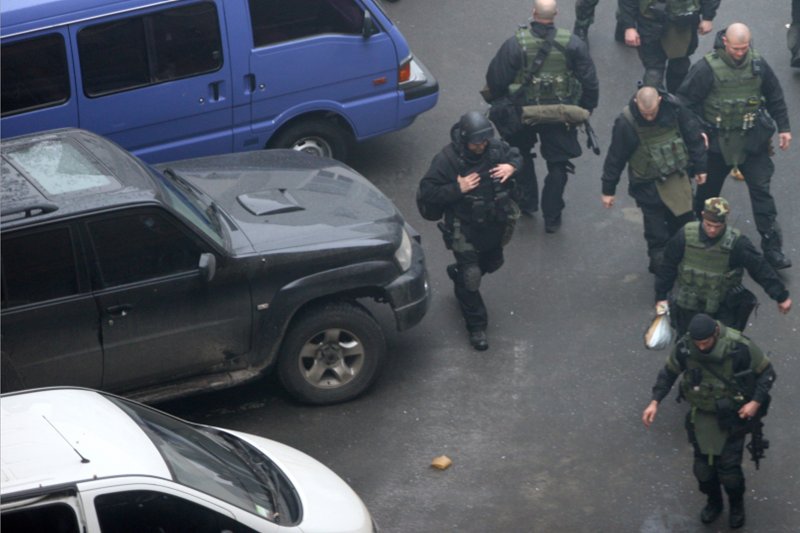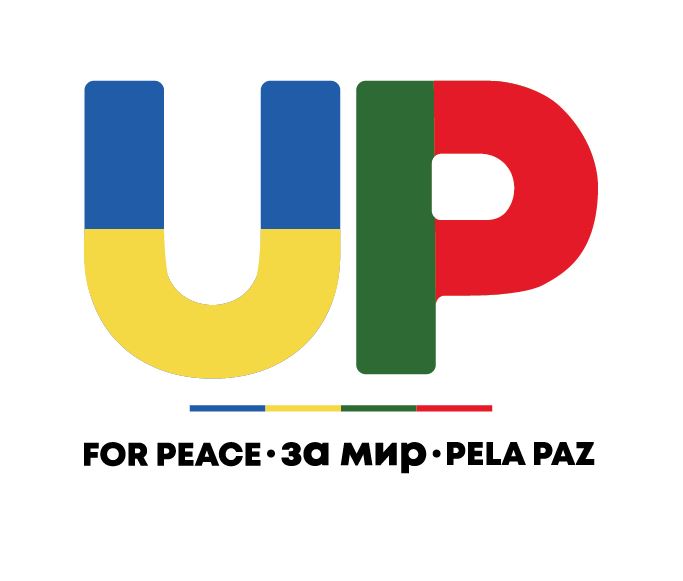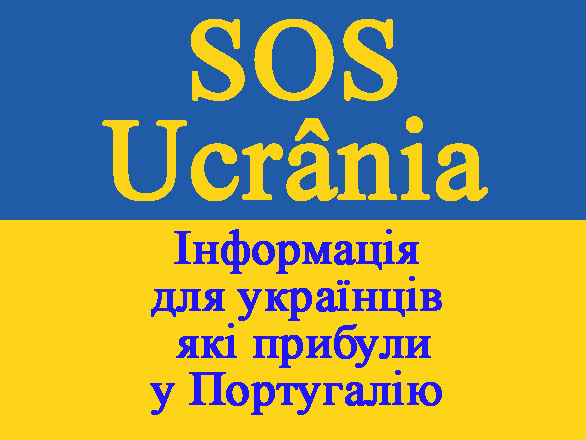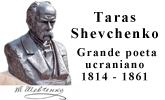- Закон України № 376-V про Голодомор 1932-33 рр.
- Офіційне визнання міжнародною спільнотою
- Суд над організаторами Голодомору-Геноциду
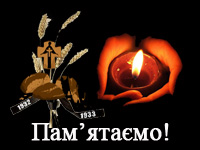 |
 |
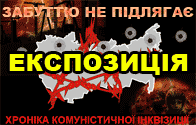 |
Статут Культурно-освітнього центру «Дивосвіт» при Спілці українців у Португалії
Увага!
- Українсько-португальська угода про соціальне забезпечення
- До уваги всіх, хто оновлює або отримує водійські посвідчення в Португалії
- У відпустку в Україну власним автотранспортом до 60 днів
- «Шлях Перемоги» - громадсько-політичний тижневик
Exclusive: Photographs Expose Russian-Trained Killers in Kiev
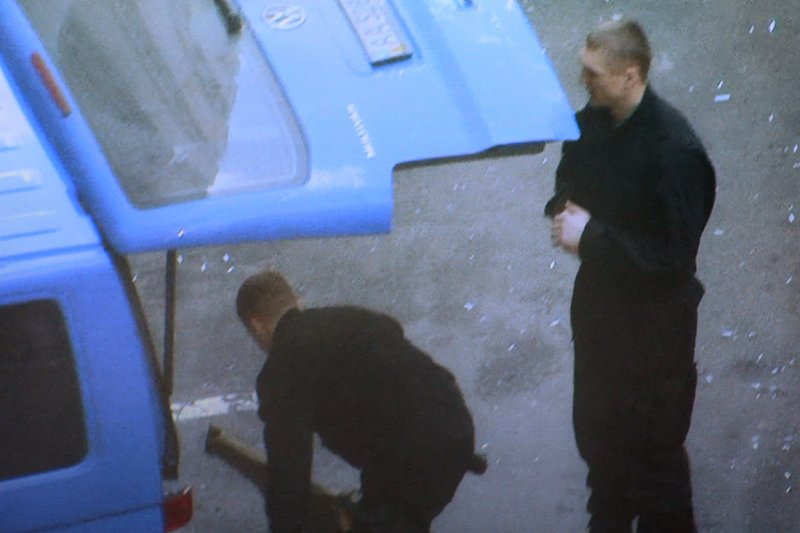 The slaughter of 53 protesters in the Maidan on February 20 changed history. Now, exclusive photographs show what really happened.
The slaughter of 53 protesters in the Maidan on February 20 changed history. Now, exclusive photographs show what really happened.KIEV, Ukraine—The first crack of a sniper’s round in Kiev’s Independence Square came shortly after nine o’clock on the morning of February 20 and the last about seven hours later at around four o’clock in the afternoon drawing to a close the bloodiest day in what had been a months-long struggle to oust Ukraine President Viktor Yanukovych.
Many of the 53 people slain died from clean shots to the head or neck—telltale wounds inflicted by expert marksmen; while others were gunned down at closer quarters by less expert assassins armed with AK-47 assault rifles.
Most of the photographs accompanying this article were taken on February 20, and they appear to reveal the truth about who carried out the shootings in Independence Square on that day—a fateful one for both Ukraine and for Europe, which suddenly witnessed the continent’s worst political violence of the 21st century. The pictures shared exclusively with The Daily Beast show members of a crack anti-terrorist unit known as the Alfa Team in the courtyard of the headquarters of Ukraine’s feared state security service, the SBU, preparing themselves for battle. The agency’s seven-story headquarters occupies an entire city block and is just three streets from the Maidan.
The SBU is the successor intelligence agency to the Ukrainian branch of the Soviet-era KGB and it still maintains exceptionally close ties to Moscow. For many years “leading SBU functionaries came from the KGB,” says Boris Volodarsky, a former Russian military intelligence officer and author of the book The KGB’s Poison Factory. He says Russia’s intelligence service, now known as the FSB, has made sure over the years to maintain deep penetration of its Ukrainian counterpart and to ensure that its “agents and associates remain in place.” That was easily done during thepresidency of the pro-Russian Yanukovych.
A U.S. intelligence source says that “since the break-up of the Soviet Union, Western security services have considered Kiev to be FSB territory.” Instructors from Russian Special Forces have trained Alfa units.
According to Dr. Olga Bogomolets, a Maidan leader and a candidate in Ukraine’s slated May presidential elections, the photographs shown to her by The Daily Beast provide unique insight into what took place on February 20. She argues they cast doubt on an official investigation currently underway into the events of that day, which was ordered by the country’s interim government and is being conducted jointly by the new head of the SBU, Valentyn Nalyvaichenko, along with the prosecutor general’s office. The SBU failed to respond to phone and email requests for a meeting with Nalyvaichenko to discuss the substantial photographic material.
“We have demanded an independent and transparent investigation into who was involved in the crimes that took place and we are very worried that the people who are investigating are members of the bodies responsible for the shootings,” says Bogomolets. Bogomolets, a physician who was nicknamed by Maidan protesters the “White Angel” because of her ministrations to the wounded in Independence Square, was on her way to visit the grave of her mother that morning to mark the first anniversary of her death. When phone calls alerted her to the start of the carnage she sped to the Maidan instead.
More than a hundred people were killed and at least 900 injured in February during the battles that seesawed in Kiev’s Independence Square between security forces loyal to Yanukovych and the protesters, who came from all walks of life and from across Ukraine’s political spectrum. They were determined to topple him and end the five-year kleptocracy in which he, his family and close associates looted the country to the tune of $70 billion.
February 20 marked a critical turning point in the conflict. It was the most violent day in the history of Ukraine since Soviet times and it proved to be the undoing of the Yanukovych regime. The snipers failed to break the spirit of Yanukovych’s opponents, but the carnage inspired key loyalists in his ruling Party of Regions, including the city’s mayor and members of the Rada, or parliament, to quit. The next day Yanukovych fled the capital, and then the country.
The death toll of at least 53 people on February 20 doubled the body count of the previous two days. At first the protesters had lost ground. Waves of coordinated sniper fire and riot police assaults pushed them back. But they clung on finally to the Maidan. Most of their barricades remained intact. They had evacuated their burned-out headquarters, the towering Trade Unions Building, which was still sending up plumes of black smoke. But still they occupied some office blocks overlooking Independence Square.
Many of the protesters who were tending the wounded and mourning the dead were in shock. But the preparations for the next day’s fight showed that sniper rounds and bloodshed had failed to cow them. Thousands worked to rebuild the barricades, laboring through the icy smoke-filled night using anything that came to hand—tires, bricks, debris—while others in a nearby underground metro station set about making Molotov cocktails.
The following day Yanukovych fled the capital, making first for the eastern Ukraine city of Kharkiv and then traveling to Crimea before going into exile in the Russian city of Rostov-on-Don, from where he has threatened to return. He, his lieutenants and top Russian officials have since claimed Maidan organizers themselves, or the Americans, were behind the February 20 shootings, purposely engineering a massacre for propaganda reasons, hoping to gain political and diplomatic advantage.
The unique photographs and 90 gigabytes of video material shared with The Daily Beast provide strong evidence that the massacre in the Maidan was in fact a vicious and clinical assault ordered by the pro-Russian Yanukovych regime and executed by its arch loyalists. But that has not prevented the Kremlin from attempting to orchestrate its own narrative of events.
In a phone call with U.S. President Barack Obama on Friday night, Russian President Vladimir Putin apparently complained about the “rampage of extremists who are committing acts of intimidation towards peaceful residents, government authorities and law enforcement agencies in various regions and in Kiev with impunity.” At least, according to the Kremlin readout on the conversation.
Moscow's UN Ambassador Vitaly Churkin on Thursday repeated Russia-Today-type claims that the US embassy in Kiev was somehow behind the snipers, providing no documentary or photographic evidence for his allegations. And Oleksandr Yakymenko, Yanukovych’s former SBU head, claimed in an interview earlier this month on the Russian TV channel Rossiya that snipers started shooting at the riot police, or Berkut, a special unit overseen by the interior ministry, but then directed their fire on anti-government protesters.
The former SBU chief suggested the snipers could have been foreigners, including mercenaries from the former Yugoslavia, hired by Maidan leaders. In fact, Balkan mercenaries have cropped up recently in Ukraine—but among the ranks of thuggish Kremlin-backed local “self-defense units” that assisted Russian forces consolidating Moscow’s hold on Crimea.
On the morning of February 20 in the courtyard of the agency that Yakymenko was still in charge of there were dozens of men, many identified as members of the elite Alfa team by former SBU officers and private-sector defense experts from a variety of Western nations who have looked at the photographs.
The images accompanying this article show Alfa Team members and others from SBU and Ministry of Interior special forces units donning body armor, helmets and other equipment, grabbing ammunition and sporting sniper rifles and modified AKs. Some of the Alfa members carry lethal fragmentation grenades: “Not the kind of equipment used for crowd control,” remarked a surprised Western defense official looking at the photographs.
From early morning until midday on February 20 Alfa Team members come and go in the courtyard of the SBU’s national headquarters as firing echoes three blocks away in the charnel house of the Maidan. No afternoon pictures of the courtyard were taken by the sources, who are ordinary Ukrainians and not connected with any government authority either in Ukraine or overseas. They filmed the material themselves and their camera numbers match the metadata on the supplied digital pictures and video footage.
Many of the paramilitary Alfa members in the photographs are wearing yellow or white armbands and before they leave the courtyard they pull on ski masks to obscure their features. The armbands were used so they could identify themselves at a glance among the riot police and other regime forces in the midst of frantic street clashes. The articles of clothing they are wearing—black tactical coveralls, green tactical vests and flak jackets—don’t match the clothing worn by the riot police, according to several frontline protesters who’ve looked at the pictures. The coveralls are of a different design, they say, and the green outer gear doesn’t match either.
“Their faces aren’t hidden,” exclaimed Maria Tomak, a 26-year-old investigator with a rights group called EuroMaidan SOS, when shown photographs. EuroMaidan SOS is conducting its own investigation into the February 20 shootings but she and a colleague say they have never seen before any photographs or video of the SBU courtyard taken on February 20. They note that without the ski masks the men can be identified. “Alfa only has about two hundred members,” says Anastasia Rozlertska, a 27-year-old activist.
Despite that, as far as can be discovered the SBU has failed to arrest or suspend or place on a wanted list anyone who was on SBU property that morning suiting up and preparing to wage war on protesting civilians. TheSBU could have its own sources of information, there are CCTV cameras covering the courtyard, although a Western defense official cautions that the digital recordings could have been destroyed before the post-Yanukovych change of top SBU leaders.
Forty-five year-old Boris Aseyev, a web designer, was one of the civilians wounded on February 20. He had been camped out in the Maidan since the protests started in November. He was determined to stay the course. A thin man with a wisp of a goatee beard, he struggles with a stutter to explain what happened to him that day. His heavily bandaged right leg is propped up on a stool in his apartment and his crutches lean on fridge. His wife hovers close by.
Aseyev says he has no idea of the exact time he was first shot. “I didn’t have a watch on,” he says. “But it was the morning.” To the left of him a Samsung computer screen is frozen on a picture of protesters wearing different colored helmets and holding up makeshift shields. He was near a walkway bridge just below Kiev’s Ukraine hotel, a Soviet pile looming over Independence Square, when an AK-47 round hit his foot. As he tried to withdraw from the front line under his own steam he was hit twice more with another Kalashnikov round tearing through the muscle and sinew of his right leg and then a sniper bullet struck him—again in the same leg.
Blood gushed from his wounds. People were screaming. Gunfire echoed all around as another protester helped Aseyev to the Ukraine Hotel and the makeshift clinic on the ground floor manned by volunteer doctors and nurses, among them Bogomolets.
She says Aseyev is lucky to be alive. “The first snipers probably were working already in between nine and ten o’clock in the morning and the last person killed was killed around 4:00 p.m. Most people who were killed near the Hotel Ukraine were killed between 11:00 and 1:00. Twelve of them died in the lobby of Hotel Ukraine. We had eight surgical tables and doctors were doing an incredible job trying to save lives.” But “the wounds were very heavy. Snipers were shooting to the heart, to the neck, brain and eyes. So in a few minutes most of the wounded died,” she says.
The Ukraine Hotel’s lobby was a mess with doctors and volunteers slipping on the blood on the floor, calling out for assistance, working feverishly to do what they could to sustain life. More wounded were being brought in. The dead were carried upstairs to a restaurant-turned-morgue.
In a weird post-script to the event a few days after the massacre Estonian Foreign Affairs Minister Urmas Paet spoke with E.U. foreign affairs chief Catherine Ashton in a phone call tapped and leaked to the public on YouTube, most likely by Russian intelligence operatives or their allies. Paet is heard saying that a doctor in the Maidan during the shootings said she thought the snipers were shooting at both police and the protesters and that the shooters were acting on the orders of the opposition. Bogomolets has been identified as his source, but she says she has no idea how Paet could think that was what she was saying. “Snipers were killing protesters,” she says. “Maybe it was a misunderstanding,” she adds.
More than a month later and the Ukraine Hotel lobby is no longer a scene of desperation or carnage. Outside on a stage in the nearby Maidan loudspeakers boom out whoever is speechifying or singing. The Maidan is in war mode, waiting to see if Putin is going to order his troops across the border and grab more Ukrainian territory. Piles of flowers and makeshift altars remembering those who fell decorate Independence Square and streams of Ukrainians still come to pay their respects, saying the Maidan is the birthplace of a new Ukraine.
Sitting in the corner of the hotel lobby and reviewing some of the February 20 photographs, Adrian Karatnycky, former president of the New York-based Freedom House, a non-profit organization that advocates for political freedom and human rights, says the photographs are “smoking guns” and a “major contribution to getting closer to the truth.” He notes the proximity of the SBU headquarters to the shootings. “They have the type of gear that was used.”
U.S. Ambassador to Ukraine Geoffrey Pyatt said after seeing the pictures, “These photographs may be highly important evidence of what happened on February 20. They add to the urgency for a full and thorough and impartial investigation into the shootings in Independence Square. Ukrainians have a right to know the truth and they expect that those responsible for the killings and the people who ordered the snipers in should be held accountable.”
Most of the activity in the SBU courtyard on February 20 is from between 9:00 a.m. and 10:00 a.m. and then about an hour-and-half later at between 11:40 and noon when a group of Alfa members walk back around the corner and sit in a van looking tired. On the video about that time two Alfa members low-five each other as if to say job well done.
The next day there is again a lot of activity in the courtyard but it is of a totally different nature and the tasks being performed are not preparations for battle or rotation of fighters but the measures accompanying a hasty retreat. Yanukovych was in flight by then and the regime crumbling fast. The SBU appears to be covering tracks, getting rid of evidence, tying up loose ends. The day begins with smoke rising from one of the chimneys, possibly a burning of documents, reminiscent of similar scenes during the anti-communist revolutions in East Germany or Romania in 1989.
Four men in army uniform are seen loading massive safes onto a trolley. Western defenses officials suspect they were stuffed with highly sensitive intelligence files, their destination most likely being Moscow. Other men in black coveralls are seen busily switching Ukrainian tags on several blue, white and gray VW and Mazda trucks. And in one picture—it has also been captured on video – a couple of Alfa members are seen storing in a van what looks like ammunition crates and a weapon protected in a canvas rifle bag.
Asked what he thinks about the men who shot him, Boris Aseyev says he doesn’t bear any grudges towards them. “They are zombies,” he explains. “I think they are just creatures manipulated by Yanukovych and Putin.”
Ukraine’s new minister of justice, Pavlo Petrenko, agrees. “These last four years it’s not just the SBU that had very close ties to Moscow and Russia’s FSB, a lot of the heads of our agencies were Russian agents—at the police, the Ministry of Defense and the Prosecutor General’s department,” he says in his office near St. Michael’s Golden Domed Cathedral, where many of the wounded were taken on the night of February 20,sanctuary fearing they would be seized if they went to hospital.
A lawyer and former opposition politician, Petrenko shakes his head appalled at what was taking place in the courtyard of the SBU. “It is the responsibility of the new government to uncover all the answers to who was shooting our citizens,” he says. Above all he wants to be able to identify not just the killers but to name “those who gave the orders” and for them all to face punishment.
Petrenko acknowledges there are significant challenges to unearthing the truth and that not only those directly involved in the slaughter but the many who enabled the regime, aided and abetted it actively or through their silence, will try to obstruct the investigation and obscure the facts. But he says he has faith in those leading the probe. He said he hopes that with information provided by the media and help from friends in America and Europe to have some answers in the coming weeks.
For Petrenko this isn’t just a matter of policy or politics, it’s personal. He was in the Maidan on February 20 as the bullets flew, risking his life like thousands of others to oust a regime that ordered the killings. He braved the desperate charges of the protesters and the sniper-assisted counter-charges of the Berkut. He saw people fall and the blood gush. As the afternoon drew on he phoned his assistant to thank her for all she had done for him, saying he hoped to see her the next day. “I could tell from his voice,” she said when we talked, “he didn’t think he would make it home.”
{module mod_knopka_comments}
|
|
- Перегляди статей
- 22052872


